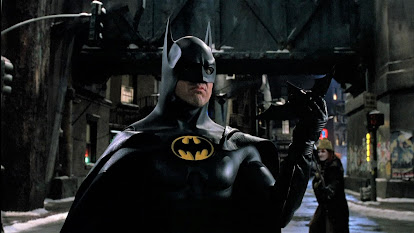 |
| Mark Wahlberg as Stuart Long in the film "Father Stu." |
While I thought the movie is one of the best religious pictures I've seen, others were less favorable because of the amount of profanity in the film. How can that be tolerated? It's a religious film!
As I noted in my article, "Father Stu" tells the story of amateur Stuart Long, who grew up with no religious background, a distant alcoholic father who became so after the death of Stuart's brother, Stephen, at age six.
So, needless to say, there's swearing in the film because the real Stuart Long cursed and swore. He was probably a master at it.
Like Stu in his later life, I too am a Catholic. I'm certainly not a great at being one.
Having been raised in the city of Oakland, California, swearing was all around me throughout life. I'm guilty of it myself. Old f-ing habits die hard, for f--k sake!
For me, even from a religious standpoint, swearing is spitting. It's severity, or sinfulness, depends on how it's used. An f-bomb stings when it's hurled directly at somebody as opposed to dropping one after you stub your toe, or getting a jury summons scheduled the same week as your long-awaited vacation. Even then, it's a gross habit and does nothing good for the swearer.
Some people are bothered by our society's arsenal of dirty words, and that's completely understandable and worth respect. Others don't seem to mind. In those cases, it is what it is. Swearing has become inconsequential in today's society. People just blurt out their obscenities like its confetti. Yet, there are many pockets of places where it's still frowned upon.
 |
| Mark Wahlberg and Jacki Weaver in "Father Stu." |
But it needs to be in there. It's a biographical picture, and that's who Stuart Long was before he converted.
If a movie is going to depict a real person, and that person swore a lot, then it's important for a biographical story to keep things real. The movie is trying to convey reality, and do so in a way for the audience to relate and become invested in it, even if elements are unpleasant to watch and hear.
If a character, based on a real person, is a drug using ex-con, and an all-around mean son of a bitch, it would take me out of the story if they never used any profanity but rather spoke lines like "Gosh darn it, you big dumb, dumb head" in intense situations.
How can the audience take the story seriously if a character, who obviously doesn't care much for what comes out of their mouth, has dialogue that doesn't fit their personality.
Or, if they come from parts of the country such as New Jersey, like in "Jersey Boys" (2014) with young Catholic Italians swearing here and there, where language like that is commonplace, then obviously it's going to be included.
Sure, some movies might over do it. The movie "Goodfellas" (1990) comes to mind. But, then again, the characters are all pretty much Italian mafioso. So, again, it's expected. There sure is a lot of it, though, in that movie. It's not pleasant to hear. Then again, the characters are unpleasant as well.
I have to add that one of the best scenes I've seen in the movie involves profanity.
In the 2010 biographical film, "The King's Speech" about King George VI and his speech therapist Lionel Logue, who helps him overcome his terrible stutter during his ascension to the throne in 1936, one the best scenes involves a string of "such language."
After Logue hears the king use the word "bloody," a common vulgarity in the U.K., he tells the king, "Vulger, but fluent. You don't stammer when you swear."
"Oh, bugger off!" the king replies.
"Is that the best you can do?"
"Well... bloody bugger to you, you beastly bastard."
"Oh, a public school prig could do better than that."
"Shit. Shit, shit, shit, shit, shit, shit, shit, shit, shit, shit, shit, shit!"
And the words keep coming, and coming, and coming, without a stammer.
"Defecation flows trippingly from the tongue!" Logue later says.
I know a lot individuals are adamantly, and admirably, opposed to swearing. And that's fine. It turns me off when I hear others use it over and over again. I'm certainly not endorsing it, nor trying to pursued people to just accept it.
But sometimes, a movie needs colorful language for the sake of realism. What needs more consideration is whether or not a movie should be made in the first place. That's the bigger issue. In "Father Stu's" case, the answer, thankfully, is "yes," swear words and all.







.jpg)